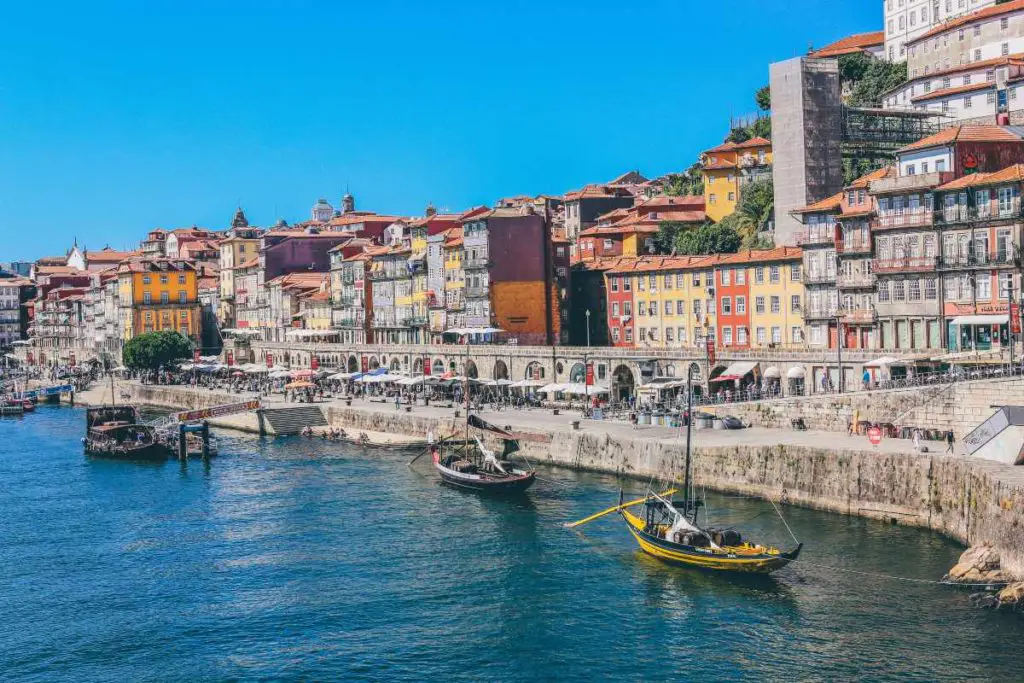Portugal, the country that in the era of the great navigations was the pioneer and First Global World Empire. It established colonies in much of Africa, Asia and especially Brazil, and the colonies were responsible for providing various natural resources, making Portugal a major power in the world trading system.
However, this dependence on colonies, in addition to mistaken trade policies and agreements, has contributed to the nation today having the lowest per capita income in Western Europe, at 23,000 dollars, in addition to the lowest average salary with only 1,000 euros a month, a figure seventy percent (70%) lower than the average salary of countries like Italy and Spain.
Despite this, as the gateway to the European continent, the country is a member of several prominent organisations such as the European Union, NATO and the OECD (Organisation for Economic Cooperation and Development).
In this article we will understand how Portugal went from the protagonism of the colonial era to the economic stagnation of the 21st century, presenting the problems and challenges of the Portuguese for the future.
The Influence of the Portuguese Colonial Period on the Economy
Firstly, it is necessary to understand the Colonial influence for the current Portuguese economic context, as for centuries the country was one of the great empires of the world, being one of the Pioneers in the intercontinental maritime expansion, establishing colonies rich in natural resources, from America to Asia, becoming one of the main protagonists of the commercial system of the world.
The Dependence on Material Resources
However, what should have been positive for the Portuguese empire in the long run brought losses, as an enormous dependence on the material resources of the colonies developed, which caused Portugal to invest more in the colonies than in the country itself.
Moreover, the maintenance of regions like Angola and Mozambique, which lasted until 1975, when they became independent, represented a high expense for Portugal, mainly for the military expenses against the guerrillas. These factors, together with several wars on the European continent, a low level of education in relation to other European powers and the absence of a transition to industrialisation during the Industrial Revolution, meant that the country gradually ran into debt and lost its relevance on the European continent, declaring bankruptcy twice, in 1892 and 1902.
What Was Antonio Salazar’s Estado Novo in 1932?
Subsequently, with the end of the monarchy and the rise of the dictator Antonio Salazar in 1932, who was to rule for the next 36 years and had fascist ideas, Portugal entered the period known as the New State, whose main characteristic was corporatism, with some private groups dominating the means of production while the state regulated prices, investments and salaries.

In this context, investment in new factories and equipment improvements needed government approval, which benefited large businessmen who enjoyed concessions and facilitations from the state, as well as reduced competition. The economic results were modest, but Salazar managed to stabilise inflation and public accounts.
After the end of the Second World War, with the economic recovery of the European industrial countries, Portugal, which was still poor and mostly agricultural, began to revise its isolationist policy, entering the European Free Trade Association in 1960, stimulating trade with other richer European nations and starting a late industrialisation, with expansion of the steel, petrochemical and textile sectors. These factors led to excellent economic results, with the country growing by an average of seven percent (7%) a year between 1961 and 1973.
The Carnation Revolution
Despite the economic improvement, growing pressure from the international communities for the independence of the African colonies and the oppressive nature of the new state culminated in the Carnation Revolution in 1974 and the transition to democracy. The African colonies finally won their independence and the socialists came to power, launching an intensive programme of nationalisation of various sectors, nationalising 244 private companies in just over a year, as well as land reform.
This period was marked by economic instability as the sudden increase in public spending led to a large increase in inflation, reaching twenty percent (20%) per year and suffering two IMF interventions in just six years. However, with entry into the European Economic Community in 1986 and later the European Union, Portugal’s history began to change, largely through increased trade ties and access to European Union development funds to improve the country’s infrastructure.
Entering the European Union
Furthermore, in order to enter a bloc with countries like Germany and France, which have strong economies, Portugal needed to carry out structural reforms, privatisations and deregulations aimed at reducing the fiscal deficit and stabilising inflation. These measures helped the country to be in a good position to enter the European Union, dropping from an inflation rate of 13 per cent to two per cent between 1990 and 1997.
Portugal’s entry into the European Union brought monetary stability, improvements in infrastructure and access to foreign investment. In this context it would be natural to think that Portugal has achieved great results since then. However, this has not materialised because since 2000 until 2019 the country has grown by an average of 0.9% per year.
One of the relevant factors for economic stagnation was the loss of competitiveness in relation to other Central European and Asian economies, both due to the adoption of a strong currency and to the rigid labour market and stagnant productivity, driving away various foreign investments.
Portugal Close to Bankruptcy in the 2008 Crisis
This situation made Portugal one of the nations closest to bankruptcy in the 2008 crisis, borrowing 78 billion euros from the European Union and the IMF to avoid economic collapse. However, to obtain this loan the Portuguese government committed itself to fiscal austerity, firing workers and reducing salaries and rights. The consequence was an increase in unemployment that jumped above fifteen per cent (15%), besides the per capita income falling by almost twenty per cent (20%).
The brain drain to other countries
The delicate economic situation led to a phenomenon that was already popular, but intensified even more with the high number of qualified young Portuguese deciding to emigrate to other countries in Europe with better economic situations and opportunities.
How many Portuguese live outside Portugal?
Estimates show that there are more than 2.2 million Portuguese living outside the country, which represents 22 per cent (22%) of the nation’s population, the second highest number in the European continent, only behind Malta. This evasion of young people is a challenge for Portugal, which has an increasingly ageing population, with a low birth rate and 21 per cent of its people aged over 65, the 4th highest demographic ageing rate in Europe, behind only Italy, Greece and Finland.
The Tourism Sector
To try to solve this situation the Portuguese government has adopted several measures to make the labour market more flexible, along with efforts to reduce the high levels of public debt, which today is the third highest in Europe, can make Portugal more attractive to foreign investors in the coming years, including placing the country on the technology map. In addition investments in marketing to highlight the nation as an attractive place to travel, study and live have managed to boost tourism which has been a key sector for the economic recovery in recent years, especially with the more diversified model attracting religious people, surfers, golfers, those interested in the excellent climate and high quality cuisine.

Since 2010, the sector’s revenue has doubled to €24 billion and now accounts for 8.7 per cent of the country’s GDP, the point is that reliance on a cyclical sector like tourism has its risks as situations like pandemics hit the sector hard which saw a 73 per cent drop in 2020, and consequently led Portugal to have the third worst economic performance since 1936, with GDP down seven and a half per cent.
Therefore the future for the Portuguese seems positive at the moment, as, despite the failure to transition from a colonial empire to modernity, in recent years the right measures have been taken to reverse this scenario, stimulating innovation and the use of what the country has best. In this way, the economic recovery that was occurring before the pandemic, supported by a highly volatile sector such as tourism, brought about the need for greater diversification, serving as a learning process to forget the difficult years and finally put Portugal back on the path to economic prosperity.









